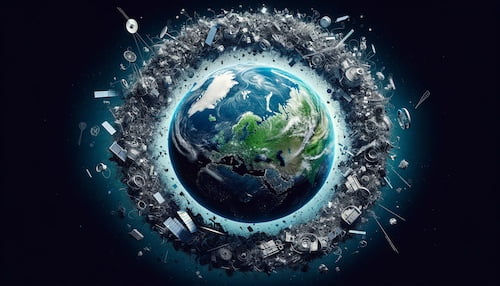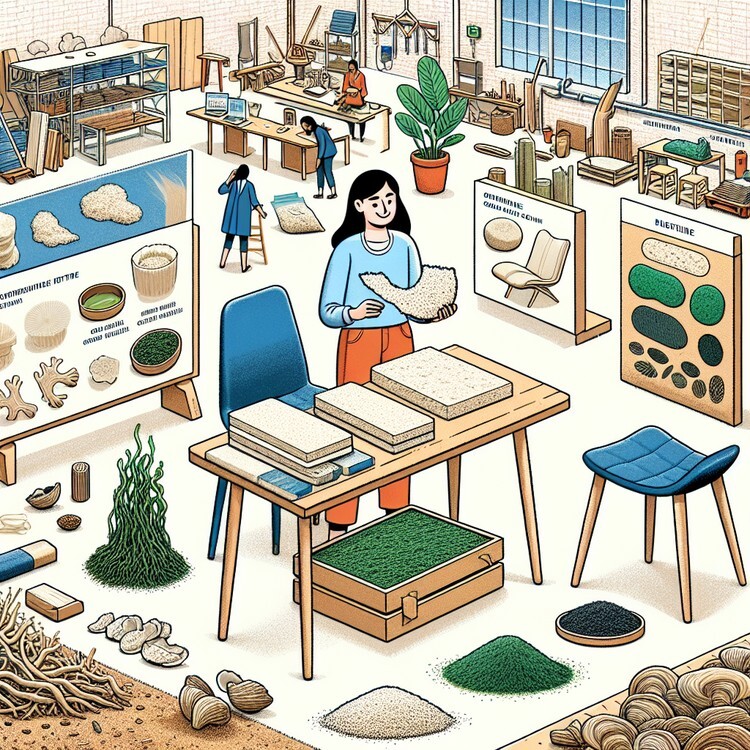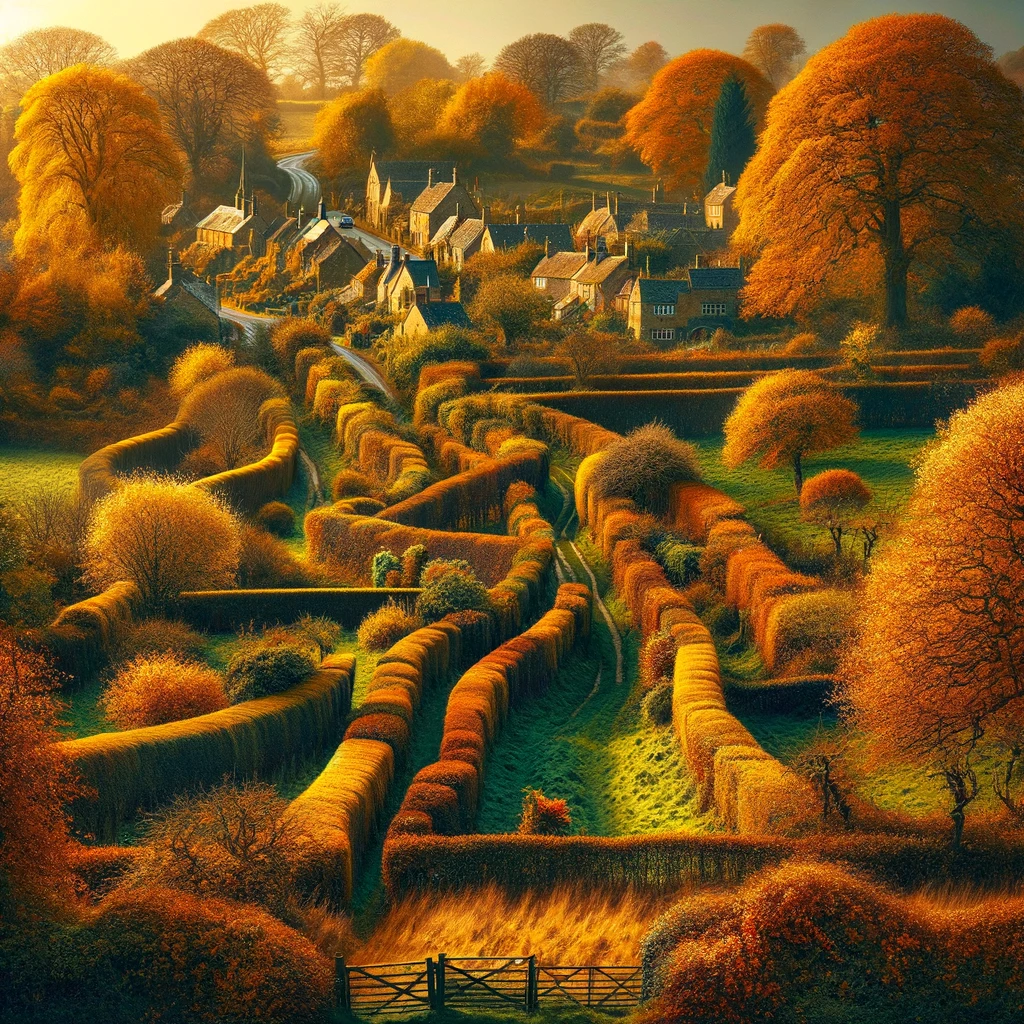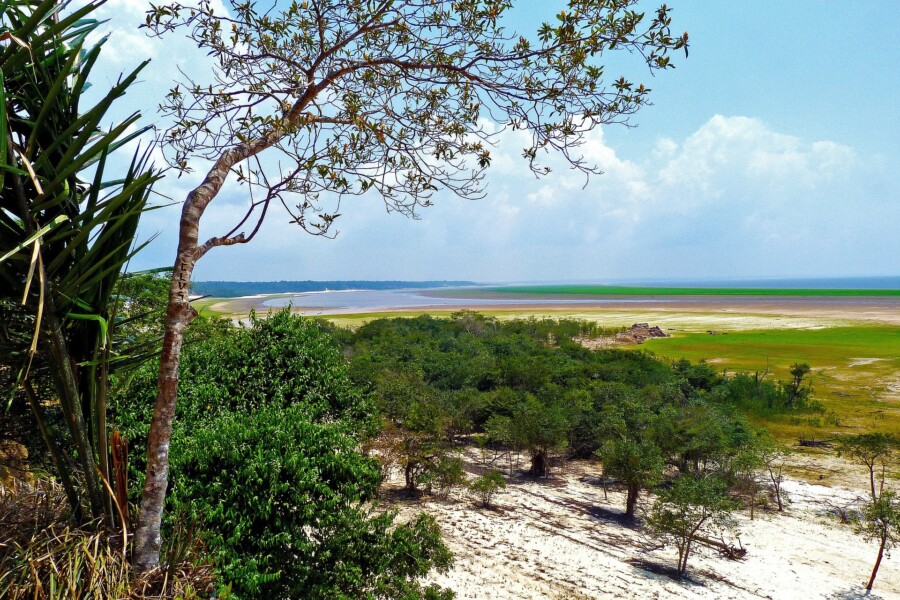The Arctic World Archive (AWA) is a unique facility located in Longyearbyen, Norway, the world’s northernmost town. Situated in the Svalbard archipelago, which lies between mainland Norway and the North Pole, this remote location is characterized by its frozen landscapes and sparse human settlements. The AWA is housed in a decommissioned coal mine, where it serves as an underground vault for preserving important data. Customers can store their information on film, ensuring its survival against technological obsolescence and the passage of time. Founder Rune Bjerkestrand emphasizes the importance of safeguarding memories and heritage through this innovative approach to data preservation.
The AWA has been operational for eight years and has received over 100 deposits from various institutions, companies, and individuals across more than 30 countries. Among the diverse collection of digitized artifacts are 3D scans of the Taj Mahal, ancient manuscripts from the Vatican Library, and Norway’s famous painting, “The Scream” by Edvard Munch. The facility operates commercially and utilizes technology from Piql, a Norwegian data preservation company also led by Bjerkestrand. Inspired by the nearby Global Seed Vault, the AWA aims to provide a secure environment for data storage, protecting it from risks such as terrorism, war, and cyberattacks.
The conditions within the vault are ideal for long-term preservation, as it remains dark, dry, and cold year-round. Bjerkestrand believes that even if global warming causes the Arctic permafrost to thaw, the vault’s robust structure will still protect its contents. A notable feature of the archive is GitHub’s Code Vault, which contains hundreds of reels of open-source code essential for software development. GitHub’s chief operating officer, Kyle Daigle, highlights the importance of securing software for future generations, as it has become integral to modern life.
Data at the AWA is encoded onto photosensitive film, which is processed to create images that resemble tiny QR codes. This method ensures that the information cannot be deleted or altered, making it easily retrievable in the future. However, concerns remain about whether future generations will understand how to access this preserved data. To address this, Piql has printed a guide on the film itself, allowing for optical magnification and reading. As the volume of data generated continues to grow, experts warn of a potential “digital Dark Age,” where advancements in technology may render current formats obsolete.
The AWA accepts new deposits three times a year, with recent additions including recordings of endangered languages and manuscripts by composer Frédéric Chopin. Photographers and archivists, like Christian Clauwers and Joanne Shortland, are also contributing their work to the vault, recognizing the importance of preserving visual evidence of climate change and historical artifacts. As digital formats become increasingly outdated, the AWA represents a crucial effort to ensure that significant cultural and historical information remains accessible for future generations.
Original news source: Visit the Arctic vault holding back-ups of great works (BBC)
🎧 Listen:
Slow
Normal
Fast
📖 Vocabulary:
| 1 | archipelago | A group or chain of islands |
| 2 | decommissioned | Taken out of active service or use |
| 3 | obsolescence | The process of becoming outdated or no longer used |
| 4 | safeguarding | Protecting something from harm or damage |
| 5 | artifacts | Objects made by humans, typically of cultural or historical interest |
| 6 | permafrost | A thick layer of soil that remains frozen throughout the year |
| 7 | robust | Strong and able to withstand difficult conditions |
| 8 | integral | Essential or necessary for completeness |
| 9 | photosensitive | Reacting to light, especially in terms of sensitivity |
| 10 | retrievable | Able to be recovered or obtained again |
| 11 | optical | Related to sight or vision |
| 12 | magnification | The process of enlarging something visually |
| 13 | obsolete | No longer in use or out of date |
| 14 | archivists | People who collect and maintain historical records |
| 15 | accessible | Easy to approach, reach, or use |
Group or Classroom Activities
Warm-up Activities:
– CHARADES
Instructions: Students will work in pairs or small groups to act out key concepts or phrases from the article related to the Arctic World Archive without using words. The rest of the class will guess what they are acting out, encouraging vocabulary recall and comprehension.
– OPINION POLL
Instructions: Students will discuss and vote on their opinions regarding the importance of preserving data and cultural heritage. Each student must provide a reason for their stance, fostering speaking skills and critical thinking.
– HEADLINE CREATION
Instructions: Students will work in groups to create catchy headlines for the article. They should aim to capture the essence of the AWA and its significance in just a few words, promoting creativity and summarization skills.
– SKETCH IT
Instructions: In pairs, one student will describe a scene or a concept from the article without revealing its name while the other sketches it. Afterward, they will compare sketches and discuss how accurately they represent the ideas, enhancing listening and speaking abilities.
– TWO TRUTHS AND A LIE
Instructions: Each student will come up with three statements about the Arctic World Archive—two of which are true and one that is false. The rest of the class will guess which one is the lie, promoting comprehension and critical analysis of the article’s content.
🤔 Comprehension Questions:
1. What is the primary purpose of the Arctic World Archive (AWA)?
2. How does the AWA ensure the longevity of the data it stores?
3. What types of artifacts have been deposited in the AWA, and why are they significant?
4. In what ways does the AWA’s location contribute to its effectiveness as a data preservation facility?
5. What features of the vault’s environment make it ideal for long-term preservation of data?
6. How does the encoding method used by the AWA differ from traditional data storage methods?
7. What concerns do experts have regarding the accessibility of preserved data for future generations?
8. Who are some of the contributors to the AWA, and what types of materials are they providing?
Go to answers ⇩
🎧✍️ Listen and Fill in the Gaps:
The Arctic World Archive (AWA) is a unique facility located in Longyearbyen, Norway, the world’s northernmost town. Situated in the Svalbard archipelago, which lies between (1)______ Norway and the North Pole, this remote location is characterized by its frozen landscapes and sparse human settlements. The AWA is housed in a decommissioned coal mine, where it serves as an underground vault for preserving (2)______ data. Customers can store their information on film, ensuring its survival against technological (3)______ and the passage of time. Founder Rune Bjerkestrand emphasizes the importance of safeguarding memories and heritage through this innovative approach to data preservation.
The AWA has been operational for eight years and has received over 100 (4)______ from various institutions, companies, and individuals across more than 30 countries. Among the diverse collection of digitized artifacts are 3D (5)______ of the Taj Mahal, (6)______ manuscripts from the Vatican Library, and Norway’s famous painting, “The Scream” by (7)______ Munch. The facility operates commercially and utilizes technology from Piql, a Norwegian data preservation company also led by Bjerkestrand. Inspired by the nearby Global Seed Vault, the AWA aims to provide a secure (8)______ for data storage, protecting it from risks such as terrorism, war, and cyberattacks.
The conditions within the vault are ideal for long-term preservation, as it remains dark, dry, and cold year-round. Bjerkestrand believes that even if global warming causes the Arctic permafrost to thaw, the vault’s robust structure will still protect its contents. A notable feature of the archive is GitHub’s Code Vault, which contains hundreds of reels of open-source code essential for software development. GitHub’s chief operating officer, Kyle Daigle, highlights the importance of securing software for (9)______ generations, as it has become integral to modern life.
Data at the AWA is encoded onto photosensitive film, which is processed to create images that resemble tiny QR codes. This method ensures that the (10)______ cannot be (11)______ or altered, making it easily retrievable in the future. However, concerns remain about whether future generations will understand how to (12)______ this preserved data. To address this, Piql has printed a guide on the film itself, allowing for optical (13)______ and reading. As the volume of data generated continues to grow, (14)______ warn of a potential “digital Dark Age,” where advancements in (15)______ may render current (16)______ obsolete.
The AWA accepts new deposits three times a year, with recent additions including recordings of endangered languages and manuscripts by composer Frédéric Chopin. Photographers and archivists, like Christian Clauwers and Joanne Shortland, are also contributing their work to the vault, recognizing the importance of preserving visual evidence of climate change and historical artifacts. As digital formats become increasingly outdated, the AWA represents a crucial effort to ensure that significant cultural and historical information remains accessible for future generations.
Go to answers ⇩
💬 Discussion Questions:
Students can ask a partner these questions, or discuss them as a group.
1. What is a memory or piece of information that you think is important to preserve for future generations? Why?
2. How would you feel if you discovered that a significant part of your culture was lost forever?
3. Do you think it is essential to preserve digital information in a physical format? Why or why not?
4. What is a technological advancement that you believe has changed the way we preserve information?
5. How do you feel about the idea of a “digital Dark Age”? Do you think it’s a real possibility?
6. Do you like the concept of storing information in remote locations, like the Arctic World Archive? Why or why not?
7. What is a historical artifact you would like to see preserved for future generations?
8. How would you feel if the way we access information today became obsolete in the future?
9. Do you think that future generations will appreciate the importance of preserving data as we do today? Why or why not?
10. What is a personal memory that you wish you could preserve in a unique way?
11. How do you think climate change impacts the preservation of cultural and historical artifacts?
12. Do you think that art, like Edvard Munch’s “The Scream,” should be preserved in a digital format or a physical format? Why?
13. What is a language or cultural practice that you think should be documented and preserved?
14. How would you feel if you had the opportunity to contribute to a project aimed at preserving important data?
15. Do you think the method of using photosensitive film for data preservation is effective? Why or why not?
Individual Activities
📖💭 Vocabulary Meanings:
Match each word to its meaning.
Words:
1. archipelago
2. decommissioned
3. obsolescence
4. safeguarding
5. artifacts
6. permafrost
7. robust
8. integral
9. photosensitive
10. retrievable
11. optical
12. magnification
13. obsolete
14. archivists
15. accessible
Meanings:
(A) People who collect and maintain historical records
(B) Easy to approach, reach, or use
(C) Strong and able to withstand difficult conditions
(D) A group or chain of islands
(E) Objects made by humans, typically of cultural or historical interest
(F) A thick layer of soil that remains frozen throughout the year
(G) The process of enlarging something visually
(H) Taken out of active service or use
(I) Protecting something from harm or damage
(J) No longer in use or out of date
(K) Related to sight or vision
(L) Essential or necessary for completeness
(M) The process of becoming outdated or no longer used
(N) Able to be recovered or obtained again
(O) Reacting to light, especially in terms of sensitivity
Go to answers ⇩
🔡 Multiple Choice Questions:
1. Where is the Arctic World Archive (AWA) located?
(a) Oslo, Norway
(b) Stockholm, Sweden
(c) Longyearbyen, Norway
(d) Reykjavik, Iceland
2. What type of facility is the AWA housed in?
(a) An abandoned warehouse
(b) A former military base
(c) A historical museum
(d) A decommissioned coal mine
3. How many deposits has the AWA received from various institutions and individuals?
(a) Over 200
(b) Over 100
(c) Over 50
(d) Over 300
4. Which famous painting is included in the AWA’s collection?
(a) “The Starry Night” by Vincent van Gogh
(b) “The Scream” by Edvard Munch
(c) “Mona Lisa” by Leonardo da Vinci
(d) “The Persistence of Memory” by Salvador Dalí
5. What technology does the AWA utilize for data preservation?
(a) Technology from Google
(b) Technology from Microsoft
(c) Technology from Amazon
(d) Technology from Piql
6. What unique feature does GitHub’s Code Vault contain?
(a) Video games
(b) Digital art
(c) Open-source code
(d) Music recordings
7. How is data encoded at the AWA?
(a) Onto photosensitive film
(b) Onto magnetic tapes
(c) Onto USB drives
(d) Onto hard disks
8. How often does the AWA accept new deposits?
(a) Three times a year
(b) Once a month
(c) Twice a year
(d) Every quarter
Go to answers ⇩
🕵️ True or False Questions:
1. The AWA is housed in a decommissioned coal mine and serves as an underground vault for preserving important data.
2. The AWA accepts new deposits three times a year, including recordings of endangered languages and manuscripts by Frédéric Chopin.
3. The facility aims to expose data to risks such as terrorism, war, and cyberattacks, dissimilar to the nearby Global Seed Vault.
4. Customers at the AWA cannot store their information on film to ensure its survival against technological obsolescence.
5. The Arctic World Archive (AWA) is located in Longyearbyen, Norway, which is the world’s northernmost town.
6. The archive contains a limited collection of digitized artifacts, excluding 3D scans of the Taj Mahal and ancient manuscripts from the Vatican Library.
7. Data at the AWA is encoded onto photosensitive film, which resembles tiny QR codes and ensures that the information cannot be deleted or altered.
8. The AWA has been operational for eight months and has received under 100 deposits from less than 30 countries.
Go to answers ⇩
📝 Write a Summary:
Write a summary of this news article in two sentences.
Check your writing now with the best free AI for English writing!
Writing Questions:
Answer the following questions. Write as much as you can for each answer.
Check your answers with our free English writing assistant!
1. What unique features of the Arctic World Archive contribute to its effectiveness in data preservation?
2. How does the AWA’s method of using photosensitive film address concerns about data accessibility for future generations?
3. In what ways does the AWA aim to protect against risks such as terrorism and cyberattacks?
4. What types of artifacts have been deposited in the AWA, and why are they considered significant?
5. How does the AWA relate to the concept of a potential “digital Dark Age” as mentioned in the article?
✅ Answers
🤔✅ Comprehension Question Answers:
1. What is the primary purpose of the Arctic World Archive (AWA)?
The primary purpose of the Arctic World Archive (AWA) is to serve as an underground vault for preserving important data, ensuring its survival against technological obsolescence and the passage of time.
2. How does the AWA ensure the longevity of the data it stores?
The AWA ensures the longevity of the data it stores by encoding it onto photosensitive film, which cannot be deleted or altered, and by preserving it in ideal conditions that protect it from risks such as terrorism, war, and cyberattacks.
3. What types of artifacts have been deposited in the AWA, and why are they significant?
Artifacts deposited in the AWA include 3D scans of the Taj Mahal, ancient manuscripts from the Vatican Library, and Edvard Munch’s “The Scream.” They are significant as they represent important cultural and historical heritage.
4. In what ways does the AWA’s location contribute to its effectiveness as a data preservation facility?
The AWA’s location in Longyearbyen, Norway, a remote area with frozen landscapes, provides a secure and isolated environment that protects the vault from external threats and ensures stable conditions for data preservation.
5. What features of the vault’s environment make it ideal for long-term preservation of data?
The vault’s environment is dark, dry, and cold year-round, which are ideal conditions for long-term preservation of data.
6. How does the encoding method used by the AWA differ from traditional data storage methods?
The encoding method used by the AWA involves processing data onto photosensitive film that resembles tiny QR codes, making it unalterable and easily retrievable, unlike traditional digital storage methods that may become obsolete.
7. What concerns do experts have regarding the accessibility of preserved data for future generations?
Experts are concerned that future generations may not understand how to access the preserved data, despite the provision of a printed guide on the film itself for optical magnification and reading.
8. Who are some of the contributors to the AWA, and what types of materials are they providing?
Contributors to the AWA include photographers and archivists like Christian Clauwers and Joanne Shortland, who are providing visual evidence of climate change, as well as recordings of endangered languages and manuscripts by composer Frédéric Chopin.
Go back to questions ⇧
🎧✍️✅ Listen and Fill in the Gaps Answers:
(1) mainland
(2) important
(3) obsolescence
(4) deposits
(5) scans
(6) ancient
(7) Edvard
(8) environment
(9) future
(10) information
(11) deleted
(12) access
(13) magnification
(14) experts
(15) technology
(16) formats
Go back to questions ⇧
📖💭✅ Vocabulary Meanings Answers:
1. archipelago
Answer: (D) A group or chain of islands
2. decommissioned
Answer: (H) Taken out of active service or use
3. obsolescence
Answer: (M) The process of becoming outdated or no longer used
4. safeguarding
Answer: (I) Protecting something from harm or damage
5. artifacts
Answer: (E) Objects made by humans, typically of cultural or historical interest
6. permafrost
Answer: (F) A thick layer of soil that remains frozen throughout the year
7. robust
Answer: (C) Strong and able to withstand difficult conditions
8. integral
Answer: (L) Essential or necessary for completeness
9. photosensitive
Answer: (O) Reacting to light, especially in terms of sensitivity
10. retrievable
Answer: (N) Able to be recovered or obtained again
11. optical
Answer: (K) Related to sight or vision
12. magnification
Answer: (G) The process of enlarging something visually
13. obsolete
Answer: (J) No longer in use or out of date
14. archivists
Answer: (A) People who collect and maintain historical records
15. accessible
Answer: (B) Easy to approach, reach, or use
Go back to questions ⇧
🔡✅ Multiple Choice Answers:
1. Where is the Arctic World Archive (AWA) located?
Answer: (c) Longyearbyen, Norway
2. What type of facility is the AWA housed in?
Answer: (d) A decommissioned coal mine
3. How many deposits has the AWA received from various institutions and individuals?
Answer: (b) Over 100
4. Which famous painting is included in the AWA’s collection?
Answer: (b) “The Scream” by Edvard Munch
5. What technology does the AWA utilize for data preservation?
Answer: (d) Technology from Piql
6. What unique feature does GitHub’s Code Vault contain?
Answer: (c) Open-source code
7. How is data encoded at the AWA?
Answer: (a) Onto photosensitive film
8. How often does the AWA accept new deposits?
Answer: (a) Three times a year
Go back to questions ⇧
🕵️✅ True or False Answers:
1. The AWA is housed in a decommissioned coal mine and serves as an underground vault for preserving important data. (Answer: True)
2. The AWA accepts new deposits three times a year, including recordings of endangered languages and manuscripts by Frédéric Chopin. (Answer: True)
3. The facility aims to expose data to risks such as terrorism, war, and cyberattacks, dissimilar to the nearby Global Seed Vault. (Answer: False)
4. Customers at the AWA cannot store their information on film to ensure its survival against technological obsolescence. (Answer: False)
5. The Arctic World Archive (AWA) is located in Longyearbyen, Norway, which is the world’s northernmost town. (Answer: True)
6. The archive contains a limited collection of digitized artifacts, excluding 3D scans of the Taj Mahal and ancient manuscripts from the Vatican Library. (Answer: False)
7. Data at the AWA is encoded onto photosensitive film, which resembles tiny QR codes and ensures that the information cannot be deleted or altered. (Answer: True)
8. The AWA has been operational for eight months and has received under 100 deposits from less than 30 countries. (Answer: False)
Go back to questions ⇧













